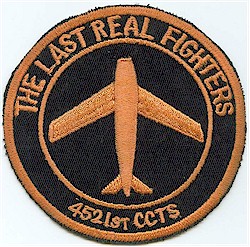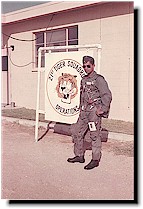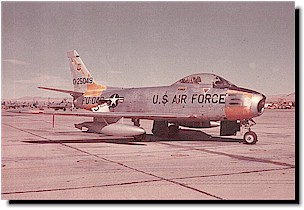Gunnery Training on the T-33 A and F-86 F Sabre at the 4521st Combat Crew Training Squadron USAF, Nellis Air Force Base, Las Vegas, Nevada, USA, June 1963 – June 1966.
Gunnery Training on the T-33 A and F-86 F Sabre at the 4521st Combat Crew Training Squadron USAF, Nellis Air Force Base, Las Vegas, Nevada, USA, June 1963 – June 1966.
Introduction
Post 9/11 the print and electronic media have been full of stories about the growing links between the armed forces of India and the USA. Several exercises between the armies, navies and air forces of the two largest democracies have been conducted and more are in the offing. At a time like this it is worth remembering that the USA had come to our aid 43 years ago when China attacked India Following the attack on India on 22 Oct 62 Pandit Jawaharlal Nehru appealed to the West for help. President John F Kennedy of the USA responded promptly with American military supplies being flown into India within a few days of the request for aid. The unilateral declaration of a cease fire by the Chinese on 22 Nov 62 ended the military conflict but left weaknesses in Indian military capability glaringly exposed.
At the end of the short conflict IAF planners felt that there was an urgent need to expand the fighter arm from the existing 17 squadrons to about double that number in as short a time as manufacture and procurement of aircraft allowed. It was felt that the operational squadron training system in India would not be able to produce the required number of fully operational pilots in time to man these squadrons. Help was, therefore, sought from both the UK and the USA. Several pilots went and trained on the Hunter with the RAF and 71 pilots were provided gunnery training on the T-33 A and F-86 F Sabre by the USAF between June 63 and June 66.
The Selection Criteria.
The USAF had specified that trainee pilots should have a flying experience of 200 jet hours and an instrument rating before being sent to the USA for operational training.
At that time the IAF flying training syllabus consisted of 50 hours on the HT-2 piston trainer at the Basic stage followed by 75 hours on the Harvard T-6 Texan at the Intermediate stage .At the end of 125 hours of piston flying the flight cadets were streamed to either the Jet Training Wing at Hakimpet, Secunderabad or the Transport Training Wing (TTW) at Begumpet, Hyderabad. At JTW the cadets started their Advanced stage of training and flew 75 hours on the Vampire T-11 Trainer and the Vampire -52 fighter before being given their coveted wings and commissioned in the General Duties (Pilot)’s branch, as the Flying (Pilot)’s branch was then called, of the IAF. Each of these stages was of six months duration.
After commissioning the fledgling fighter pilots stayed back at JTW for a further six months and started their Applied phase of training when they were taught the rudiments of tactical formation flying, air combat, gunnery and night flying. During this phase they flew a further 50 hours on Vampires. This meant that any one who had successfully completed his Applied phase of training would report to the operational squadron he was posted to with only 125 jet hours in his log book. He would have to fly a further 75 hours on an operational type and obtain a White instrument rating before becoming eligible to go to the USA.
In 1963, the IAF had the following types of aircraft in operational squadron service:- Hunter F56, Mystere IV A, Gnats, Toofanis (MD 450 Ouragan) and Vampires.
Air Hq decided that only pilots from Vampire and Toofani squadrons who met the eligibility criteria would be sent to the USA. Anyone with more than 300 jet hours was not considered except for the first batch of pilots who had been in operational squadrons for over two years. This meant only pilots who had completed their Applied phase and gone to Vampire and Toofani squadrons from the middle of 1962 onwards would be eligible. A look at the list of pilots along with their Pilots Course (PC) shows that the pilots who went to the USA were drawn from 78th PC up to 89/90th PC. The first batch, led by Fg Offr DP Rao of the 78th PC, went to the USA in June 62 and the last batch of four pilots left for the USA on 02 Sep 65. The maximum number went from 84th PC followed by 87/88th PC. The September 65 Indo-Pak war put an end to this excellent training scheme when the USA stopped all military aid to both countries.
The Training Scheme
Lackland Air Force Base (AFB), San Antonio, Texas.
All IAF pilots were sent to Lackland AFB for one month’s English language training. Officers from Latin American, Central American, Far Eastern, NATO countries and Iran were sent there because they did not know English but for the Indian and Pakistani officers it was a holiday! The officers were given a thorough medical examination and sent for a two day aero-medical orientation course at Randolph AFB where they were exposed to subjects like human physiology, hypoxia, spatial disorientation and the importance of the upkeep of pilot’s personal equipment like the helmet, oxygen mask and parachute. A climb to altitude in a decompression chamber was also included for the pilots to experience an actual explosive decompression.
Randolph AFB, San Antonio, Texas. The officers were given conversion training of about 14 hours on the T-33 A jet trainer which was the standard trainer in widespread use in the USAF. The T-33 A was powered by an Allison J-33-A 35 straight flow turbojet of 4000 pounds thrust and was equipped with power boosted ailerons and manual elevator and rudder. It was a reasonably easy and pleasant aircraft to fly but more importantly it was rugged and dependable with few vices. The duration of each sortie was 90 minutes and apart from circuits, landings and simulated flame out patterns, training was imparted in aerobatics, instrument flying, GCA radar approaches, two and four aircraft close formation. No one was sent solo at this stage. Ground lectures were conducted for T-33 A aircraft systems, aircraft instruments, air traffic control procedures, normal aircraft operating and emergency procedures. This training also lasted about a month after which the officers went to Nellis AFB.
Nellis Air Force Base, Las Vegas, Nevada. In the USAF, Nellis AFB was known as the ‘home of the fighter pilot’. The USAF Fighter Weapons School, the Thunderbirds formation aerobatic team of the USAF, a F-105 F Thunderchief (Thud) Combat Crew Training Squadron (CCTS), a F-100 Super Sabre CCTS, and the 4521st F-86F Sabre CCTS were based there.
4521st CCTS (Also known as the 21st Tiger Squadron).
The 4521st also had some T-33 A’s on its strength. The flight line where all these different types of aircraft were parked was a mile long. The pilots had to carry their back parachute to the aircraft and had to use a ‘line taxi’, a euphemism for a modified tractor trailer, to go to their aircraft from the crew room. After the comfort of the air conditioned crew room this ride was quite taxing as Las Vegas, like Jodhpur, was very hot in summer.
| SHOULDER PATCH OF THE 4521st CCTS
The staff pilots insisted that the F-86 F was the last real fighter! |
 |
At the 4521st the IAF officers flew in the same formation of four aircraft with officers from the Pakistan, Iran, Latin American and NATO Air Forces. The formation leader was always a USAF pilot from the staff of the 4521st. The IAF pilots more than held their own against pilots from these Air Forces. The knowledge that they were as good as the others did wonders to their self confidence.
Flying training lasted for three months with the first month spent on solo formation flying in the T-33 A followed by air to ground strafing and skip bombing exercises. In skip bombing the aim was to drop a bomb in straight and level flight at low altitude, high speed (150 feet above ground level, 360 knots) so as to hit a 200 feet x 50 feet target marked on the ground with a 20 feet high wall at the far end. A good bomb would land on the target area, skip and hit the wall. This was the accepted method of delivery for napalm canisters. Dual instruction was first given for each phase of training. This was followed by solo exercises. The piece de resistance was four aircraft carrying out co-ordinated air to air firing on a banner towed behind another T-33. In the IAF only two aircraft co-ordinated attacks were practised that too only by fully operational pilots and at the 4521st the trainee IAF pilots were trained to carry out four aircraft co-ordinated attacks! This boosted one’s self confidence and also showed that we tend to be excessively conservative in our training methods.
The second and third months were spent on conversion and gunnery training on the F-86 F Sabre. This was a real pilot’s aircraft with excellent handling qualities and for all the IAF trainees it was the first aircraft they flew with hydraulically powered flight controls. The power plant was a J-47-GE-27 turbojet delivering 6000 pounds of thrust at sea level. It had a gyro gunsight and 6x 0.5 inch calibre Browning machine guns, three on either side of the nose. It could carry 1800 rounds of ammunition giving it a firing time of 15 seconds for all guns. The cockpit had excellent all round visibility and had a ground level ejection seat.
Air to ground strafing, rocketry, skip and dive bombing were followed by air to air firing on the banner. Again four aircraft coordinated attacks on the banner were practiced. These sorties were preceded by an adequate number of lectures by the staff pilots on the theoretical aspects of gunnery and bombing. Written examinations were held for all the subjects taught. One very interesting sortie was a four aircraft formation led by a staff pilot going to the tactical range in the Nevada desert and attacking a convoy of derelict vehicles and tanks using all six guns of the Sabre.
At the end of the training a Top Gun trophy was awarded to the student with the best scores in both air to ground and air to air firing. A number of IAF officers walked off with this award. No IAF trainee was involved in any accident. All officers flew about 70 hours on both types of aircraft.
General.
In sum the young officers benefited immensely from this extremely well conducted and intensive gunnery training. Flying two different types of aircraft in perhaps the most advanced air force in the world gave them a lot of self confidence and widened their aviation horizons. In addition there was the added benefit of interacting with a large number of officers from other nations including Pakistan. They discovered that fighter pilots from any corner of the world spoke the same language, had a lot of professional pride and an easy going approach to life in general.
The two cities where the Indians were based, San Antonio and Las Vegas had plenty of sights to see and nightlife to experience. They made use of these opportunities, enjoyed themselves fully and returned home wiser in more ways than one!
IAF Pilots who underwent Gunnery Training
26 Aug 1963 to 18 Jan 1964
6009 F(P) F/O Arun Vithal Kamat
6016 F(P) F/O Pritam Singh
6018 F(P) F/O Mervyn Jude Pinto
6140 F(P) F/O Ashok Oza
6142 F(P) F/O Ajay Jiwanlal Mody
6147 GD(P) F/O Amerjit Singh Gill
1 Sep 1963 to 1 Mar 1964
6519 F(P) F/O Darshan Singh Basra
4 Apr 1964 to 1 Sep 1964
6528 F(P) F/O Vinod Kumar Verma
6744 GD(P) F/O Iqbal Fazal Husain
6748 F(P) F/O Philip Rajkumar
6757 F(P) F/O Nirmal Kumar Kapur
6766 F(P) F/O Shailendra Singh Kaushik
7207 GD(P) P/O Tajinder Singh Sethi
7209 F(P) P/O Jawahar Lal Bhargava
7396 F(P) P/O Vaidun Kumaraswamy Vidyadhar
1 June 1964 to 31 Jan 1965
7663 F(P) P/O Harbans Singh Sahota
7668 F(P) P/O Gurmit Singh Maan
5 Sep 1964 to 14 Apr 1965
7697 F(P) P/O Chandra Kant Krishnatri
1 Nov 1964 to 1 July 1965
7678 F(P) F/O Manchershah Manekshah Captain
8395 F(P) F/O Amalendra Nath Sen
8415 F(P) F/O Deepak Kumar Sonpar
1 Mar 1965 to 1 Oct 1965
7675 F(P) F/O Hemant Vishnu Khatu
8365 F(P) P/O Eapen Mathulla
8366 F(P) P/O Krishan Kumar Avlash
8383 F(P) P/O Arun Bhaskar Bhave
8386 F(P) P/O Vijay Kumar
8421 F(P) P/O David Malcolm Subaiya
8423 F(P) P/O Jayendra Sukrut Raj
8432 F(P) P/O Ritu Raj Jaindass
1 May 1965 to 1 Dec 1965
8388 F(P) Ranjit Singh Bawa
8420 F(P) Syed Iqbal Ali
2 Sep 1965 to 30 June 1966
8995 F(P) F/O Dinesh Chander Nayyar
Dates not know
6008 GD(P) Draksharam Panduranga Rao
6337 GD(P) Darshan Singh Brar
6356 GD(P) Uday Raghunath Potnis
6359 F(P) Arvind Kale
6497 F(P) Vinod Kumar Bhatia
6503 F(P) Avinash Chander Goel
6508 F(P) Vijay Mayadev
6515 F(P) Boman Rashid Irani
6521 F(P) Dinkar Shantaram Jatar
6529 F(P) Brajananda Roy
6533 GD(P) Ashok Kumar Kaushal
6536 GD(P) Arun Damodar Jatar
6746 F(P) Girish Chandra Nautiyal
6762 F(P) Suresh Shankarrao Dange
7221 F(P) Kailash Chandra Parik
7225 GD(P) Peter Michael Brown
7226 F(P) Ashok Kumar Gandhi
7228 F(P) Tejwant Singh
7393 GD(P) Bhaskar Guha Raye (RIP (Road Accident Sep’65))
7397 F(P) Russell Douglas Montes
7399 F(P) Michael McMahon
7401 F(P) Chandrakant Nijanand Bal
7403 F(P) Apram Jeet Singh
7406 F(P) Pattonath Madhavan Lokanathan
7407 F(P) Vappale Ramchandran Nair
7408 F(P) Virendra Kumar Chawla
7411 F(P) Chander Kumar Sharma
7413 GD(P) Darshan Kumar Nangia
7414 F(P) Vijay Kashinath Bapat
7415 F(P) Kumarendra De
7416 F(P) Kuldip Singh Cheema
7417 F(P) Vijay Kumar Sethi
7420 GD(P) Alok Roy
7430 F(P) Owen Joseph D’Sena
7443 GD(P) Ajit Mohan Balse
7662 F(P) Vinay Vasant Tambey
7664 F(P) Azeez-Ur-Rahman
7672 F(P) Tej Mohan Asthana
7673 F(P) Ravish Malhotra
7691 F(P) Inder Jit Singh Boparai
7696 F(P) Jogendra Singh Sisodia
7703 F(P) Amariit Singh Sandhu
7705 F(P) Mohammad Raza Shirazi
8379 F(P) Padmanabha Prabhakaran
8418 F(P) Bertrand Joseph Vaz
8426 F(P) Chittatoor Doraiswami Chandrasekhar
8427 F(P) Harinder Pal Singh Shergill
8440 F(P) Seranjit Singh Bassley
8445 F(P) Gurumurthy Balasubramanian
8757 F(P) Krishna Kumar Mohan
RIP KIA – Killed in Action
RIP NC – Natural Causes
Notes : Five officers rose to the rank of Air Marshal – VK Bhatia, VK Verma, P Rajkumar, M McMahon and TM Asthana


Following were in second batch sep63 to mar 64
AC GOEL
VM MAYADEV
DS BASRA
DS JATAR.
DS BASRA ALSO ROSE TO BE AIR MARSHAL